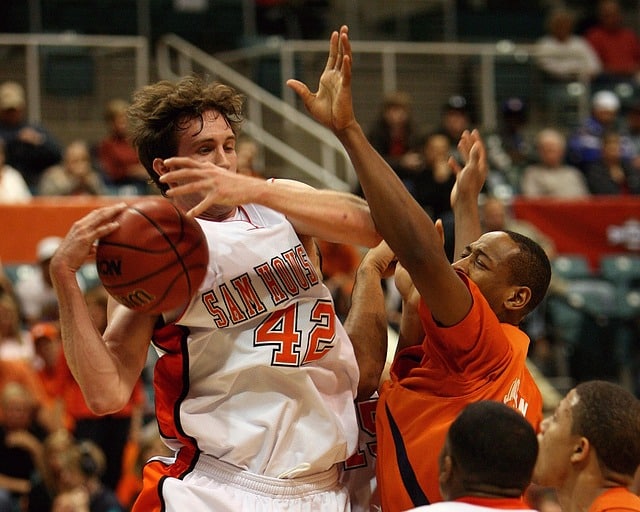Basketball isn’t just a game of athleticism—it’s a chess match on the hardwood. Every possession, every play, and every decision you make can swing the game in your favor—or leave you scrambling to make up the deficit. Mastering basketball game strategy is essential for any player or coach who wants to outsmart opponents and gain that crucial edge. Whether you’re looking to develop a winning game strategy, refine your playcalling, or learn how to adjust to changing situations during the game, this guide will break it down for you.
1. Developing a Winning Game Strategy
Before the first whistle blows, your team’s game preparation begins. Developing a winning game strategy involves more than just drawing up plays—it requires an understanding of your own team’s strengths and weaknesses, as well as those of your opponent.
A great basketball strategy starts with a clear vision. What kind of team do you have? Are you loaded with sharpshooters who can rain down threes, or do you have a dominant big man in the paint who can control the game down low? Do you have quick, agile guards who can push the pace in transition, or are you better off slowing the game down and playing methodical half-court basketball?
For instance, the Golden State Warriors’ strategy over the last decade has been built around spacing, ball movement, and three-point shooting. Their game plan is simple: create open looks from beyond the arc, use screens and motion to keep the defense guessing, and let their shooters—like Stephen Curry and Klay Thompson—take care of the rest. This offensive approach leverages their personnel, while also putting tremendous pressure on their opponents to keep up with the pace.
On the defensive side, teams like the Miami Heat under Erik Spoelstra have embraced the “switch everything” defense, where every player on the floor is versatile enough to guard multiple positions. This strategy forces the opposing offense into uncomfortable situations, neutralizing mismatches and creating confusion. In this case, developing a strategy isn’t just about your team’s strengths but also about denying your opponent their strengths.

2. Basketball Playcalling: The Art of Calling the Right Plays
Once the game starts, your strategy must be communicated through playcalling. Whether you’re a coach on the sidelines or a player on the court, the ability to call the right plays at the right time can make all the difference.
For offensive playcalling, it’s important to understand when to be aggressive and when to be patient. Sometimes you’ll want to attack immediately, pushing the ball up the floor and catching the defense off guard. Other times, you’ll need to run a set play to create a high-percentage shot. In the NBA, teams like the San Antonio Spurs have mastered the ball movement-first offense. Rather than relying on isolation plays, they emphasize passing, spacing, and timing to find the open shot.
For defensive playcalling, it’s about understanding your opponent’s tendencies. Are they a high-paced team that thrives in transition? If so, your defense should be designed to slow them down and force them into a half-court set. Is your opponent heavy on post-ups? Then you might call for a double-team or a zone defense to force them to kick out and settle for less efficient shots. Switching up defenses—from man-to-man to zone or press—keeps your opponent on their toes and prevents them from finding a rhythm.
I remember watching a game where a coach called a 1-3-1 zone defense late in the game, catching the opposing offense off-guard. The change in defense forced several turnovers, and in the final minutes, it was the difference between winning and losing. Adjusting your defensive playcalling based on the game’s flow is essential for staying one step ahead of your opponent.
3. Ingame Adjustments: Adapt or Lose
In basketball, situations change on the fly. What works in the first quarter may not work in the fourth. This is where ingame adjustments come into play. Great coaches and players have the ability to adjust their strategy mid-game based on how things are unfolding.
For example, if you’re playing against a team that is constantly attacking the rim, you might need to adjust by shifting your defense. Perhaps your big man needs to step up and contest shots at the rim, or you may decide to collapse the paint and force your opponent to beat you from the outside. If your opponent is hitting their threes, you might switch to a close-out defense or even change your defensive scheme altogether.
Similarly, on offense, if your team is struggling to get clean looks, you may need to call for a new set play to create better spacing or try a pick-and-roll to take advantage of a mismatch. The best teams know how to recognize when a strategy isn’t working and adapt quickly. Flexibility in your strategy is a key to success.
4. Offensive and Defensive Strategy: Balancing Both Sides of the Court
A successful basketball strategy isn’t just about offense or defense—it’s about the balance between the two. Think of it as a two-way street: if your defense is stout, it will set up your offense, and if your offense is rolling, it can create defensive opportunities. The key is to find synergy between the two.
For offensive strategy, you should decide whether you want to run a fast break offense, pushing the ball up the court as quickly as possible to get easy baskets before the defense can set up, or whether you want to grind it out in the half-court with pick-and-rolls, ball movement, and screening. Great teams know how to adapt to the flow of the game and make the right choice based on the defense they face.
Defensively, it’s about being versatile. Some teams like to play tight, aggressive man-to-man defense, while others will switch to a zone or use full-court pressure to force turnovers. Both sides of the ball are connected; the better your defense, the easier it is to score in transition.
One thing to remember is not to overcommit to one aspect of the game. A team that’s only focused on scoring and ignores defense will get burned. Likewise, a team that focuses solely on defense and can’t score won’t make it far either. The most successful teams understand the importance of balance and complementary play on both ends of the floor.
5. Adjusting Strategy for Different Opponents
One size does not fit all when it comes to basketball strategy. Different teams require different game plans. For example, a team that relies on three-point shooting may need a defense that closes out hard and contests every shot. If your opponent has a dominant big man, you might need to double-team him in the post or crowd the paint to prevent easy baskets.
The ability to read your opponent and make adjustments is critical. If you’re facing a team that loves to play fast, you may want to slow the game down with a deliberate offensive strategy. On the flip side, if you’re up against a team that plays slow and methodical, you might try to speed things up with a press or trap defense.
Team chemistry also plays a significant role in how well a strategy works against certain opponents. A team that communicates well defensively can switch seamlessly on screens, making it hard for the opposing offense to break through. Conversely, a team that has strong offensive chemistry can execute plays effectively, even under pressure, and find open shots when they need them most.
6. Adjusting to Game Situations: Stay Calm, Stay Smart
The best basketball players and coaches know how to adjust to the moment. Sometimes you’ll be in a tight game and have to make quick decisions—do you go for the tie, or do you try to win it with a three-pointer? Should you foul, or should you let the clock run out?
Ingame situations require quick thinking and clear communication. Stay calm and evaluate the situation. If you’re down by one with seconds left on the clock, do you have a set play ready to get an easy shot? Have you practiced inbound plays and situations like these, where strategy and execution make the difference?
Basketball is a game of constant ups and downs, but a well-prepared team will always be able to adjust. Whether it’s switching up your defense, altering your offense, or making key in-game decisions, these strategic adjustments can be the difference between a win and a loss.
Conclusion
Mastering basketball game strategy takes time, patience, and a deep understanding of the game. It’s about developing a winning game plan, making the right playcalls, adjusting to different situations, and recognizing when and how to exploit weaknesses in the opponent’s game.
Remember, the best teams are not just talented—they are strategic, knowing exactly what to do in every situation. They make adjustments on the fly, understand the importance of team chemistry, and have the flexibility to adjust their plans depending on the opponent and the game’s circumstances.
So next time you’re on the court, keep these principles in mind. Whether you’re a coach or a player, mastering basketball strategy will not only help you outsmart your opponents—it will give you the confidence to take control of the game, one play at a time.



